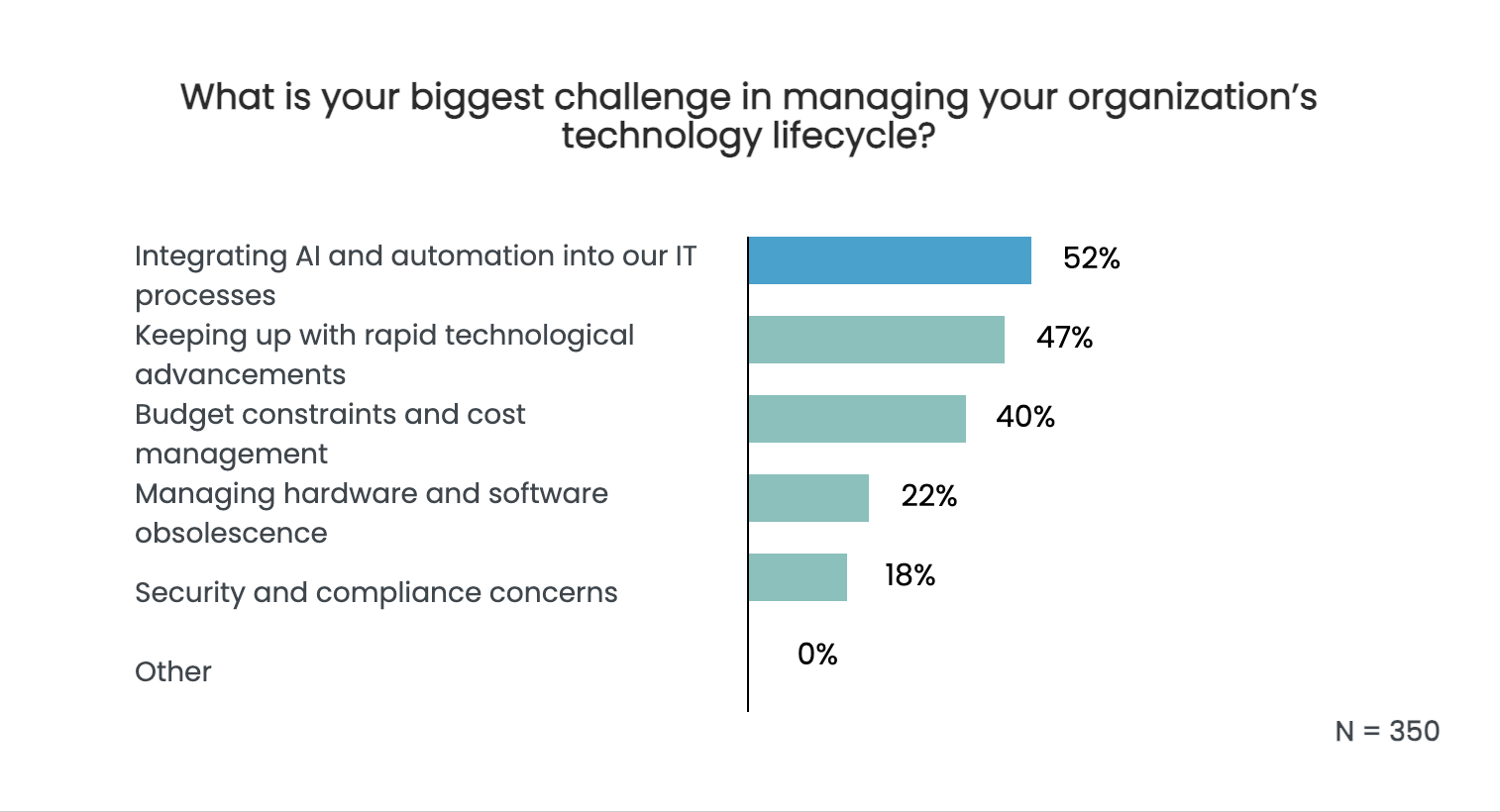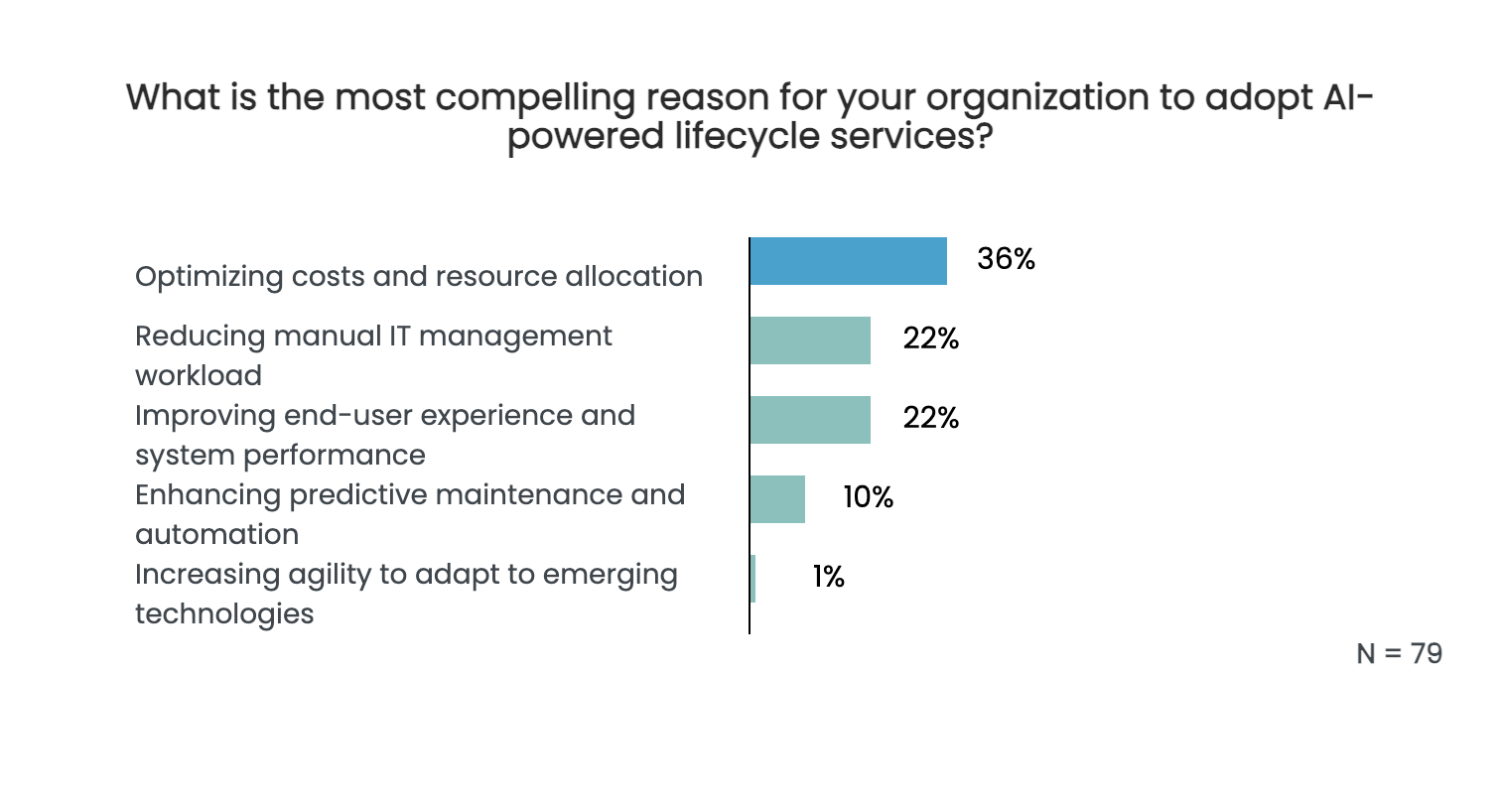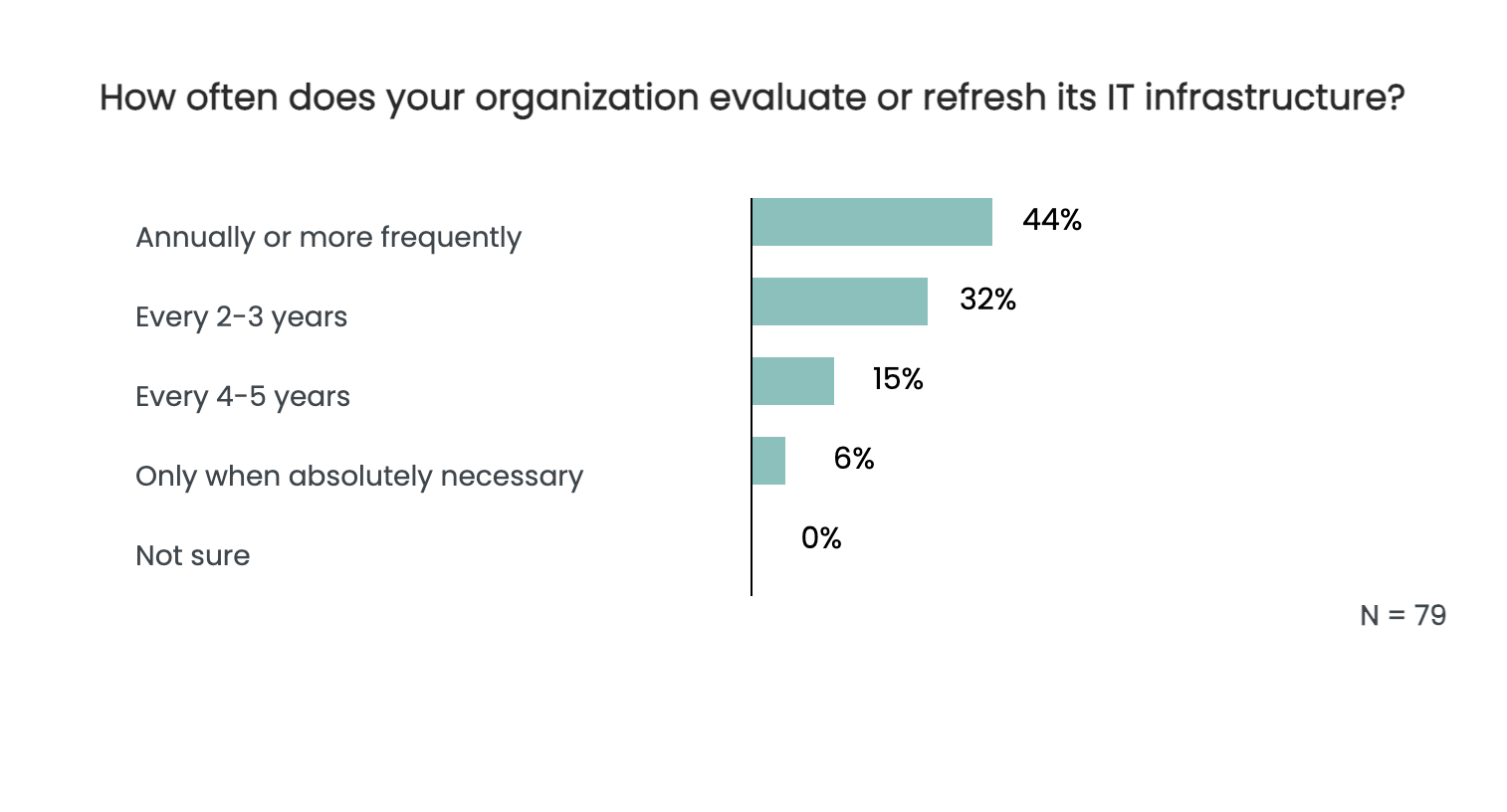Event Insight
April 22, 2025
What Makes Technology Lifecycle Services So Important in Our AI-Powered Era?
In an age where artificial intelligence is redefining how businesses operate, technology lifecycle services (TLS) are stepping into a new spotlight. During our recent event, "What Makes Technology Lifecycle Services So Important in Our AI-Powered Era?" Kyle Foster, Sales Director at GlassHouse Systems, shared valuable insights into why TLS has become an essential pillar in modern enterprise strategy.
Key Challenges in Managing Technology Lifecycles
Kyle emphasized that in today’s complex IT environments, organizations face mounting challenges, especially in multi-vendor ecosystems. BeTechly conducted a survey of 350 business leaders where they were asked what the biggest challenge in managing their organization's TLS was. 52% struggle to integrate AI and automation into their IT processes, 47% cite rapid technological advancement, and 40% battle budget constraints and cost management.

Kyle said that in his experience, security, technical debt, and cost—doing more with less—are the top issues of the day.
Complexity, Support, and Management: The Hidden Burdens
Kyle broke the TLS problem down into three areas: complexity, support, and management. These hidden burdens often go unnoticed but significantly impact operational efficiency:
1. Complexity: Multi-vendor environments introduce unique combinations of hardware, software, and services. Organizations must navigate interoperability issues, manage dependencies (such as co-requisite or prerequisite software), and in some cases, operate without standard certifications or best practices. As Kyle put it, “You become the general contractor,” stitching together a patchwork of systems to maintain operations. This complexity directly ties into elevated cybersecurity risks due to inconsistent configurations and coverage.
2. Support: Troubleshooting in complex environments becomes more difficult when vendors only take responsibility for their own systems. This lack of unified support leads to extended resolution times. Kyle explained, manufacturers are either less able or less willing to assist, especially when the root cause spans across systems. This increases costs not only monetarily, but also potentially through poor services and loss of customers.
3. Management and Skills: Diverse environments require broad skillsets. Often, institutional knowledge is siloed within a single individual—the only one who remembers how it was put together five years ago or longer. This creates a critical dependency and hinders future upgrades. Additionally, keeping systems current becomes challenging when every change risks breaking integration with legacy components.
These burdens form the foundation of technology debt, which prevents organizations from staying current and secure. TLS can help mitigate these issues by offering structured support, skilled expertise, and tools to simplify management.
The Role of AI in TLS
One of the event’s major takeaways was the growing role of AI-infused management tools. BeTechly conducted another survey of 79 business leaders where they were asked what the most compelling reason for their organization adopting AI-powered TLS was. 36% cite optimization, 22% want to reduce manual IT workload, and 22% aim to improve end-user experience.

Kyle elaborated that AI enables observability, resource management, and cost management. Tools like Instana, Turbonomic, and Apptio help visualize workloads, allocate resources, and dynamically improve performance—often without human intervention. However, trusting AI to do the work it was designed for is a big challenge for many.
Common Pitfalls and How TLS Solves Them
Kyle noted that organizations often get trapped in a cycle of reactive upgrades and patchwork fixes. Another BeTechly survey of 79 business leaders reveals that only 44% do so annually, while 15% wait 4–5 years or longer.

TLS, when implemented well, provides a structured, repeatable strategy—from deployment to support to decommissioning and back again. Kyle highlighted the value of end-to-end orchestration.
The Bottom Line
Organizations embracing AI-powered TLS gain faster recovery from outages, improved application uptime, and competitive advantage through smarter resource use. As Kyle put it, those that are aggressively deploying AI in TLS will be the winners in the end.
Want to dig deeper? Watch the full event replay here, and explore more insights on how to future-proof your tech operations!



 Join Our Insight Gift Network
Join Our Insight Gift Network